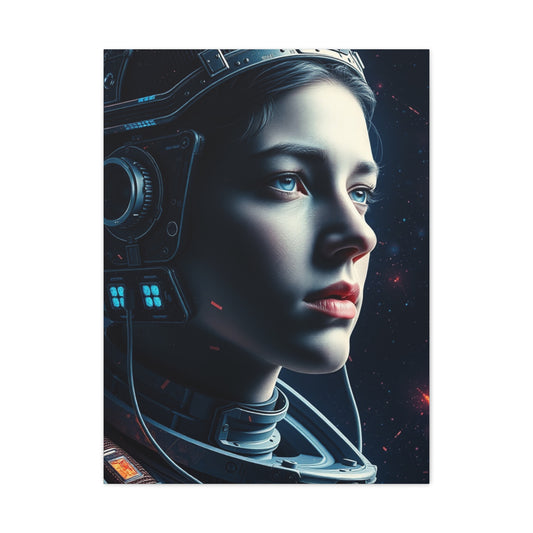What do you do with all the photos you take? For many people, photos often end up sitting in digital storage or stored away in albums, rarely to be seen again. However, there are plenty of creative ways to bring your photos to life and transform them into meaningful, personalized gifts for friends and family. Whether it’s for a birthday, anniversary, or special occasion, these DIY photography gift ideas will make the most of your photos and turn them into something extraordinary.
Essential Equipment for Making DIY Photo Gifts
Before you dive into creating your photo gifts, here are some tools that can help make the process smoother:
HP Color LaserJet Pro M255dw: A reliable printer for high-quality photo prints.
Amazon Basics Thermal Laminator Machine: Perfect for laminating photos to protect them and enhance durability.
Firbon Paper Cutter: Helps in cutting photos and craft paper with precision.
10 Creative Ways to Turn Your Photos Into Unique Gifts
Here are 10 inventive ways to use your photos and transform them into thoughtful DIY gifts for every occasion:
1. Frame Photos with Scrapbook Paper: A Personalized Touch for Your Photos
When it comes to displaying photographs, the frame you choose can significantly impact the overall appearance and feel of the image. While a traditional photo frame serves its purpose, sometimes it’s the small details, such as the background or matting, that truly elevate the look of a photo. Scrapbook paper is an excellent and creative way to add a personal touch to your framed photos. It offers endless possibilities for customizing your display and can be easily adapted to match any style or theme. If you're looking to transform your photos into a unique and thoughtful gift, using scrapbook paper for framing is an easy and effective method that adds an artistic flair.
Why Choose Scrapbook Paper for Your Frames?
Scrapbook paper offers more than just a colorful background for your photos. It provides texture, patterns, and colors that can enhance the mood of the photograph. Whether you want to create a rustic, elegant, modern, or whimsical look, scrapbook paper is incredibly versatile. By selecting a paper that complements or contrasts with the colors in your photo, you can create a cohesive visual appeal that draws attention to the image in a meaningful way.
One of the best things about using scrapbook paper as a mat is its ability to be customized for different occasions. For example, for a family photo, you could use paper with a warm, earthy tone to evoke feelings of nostalgia and coziness. Alternatively, for a wedding photo, you could choose scrapbook paper with delicate patterns or metallic accents to highlight the elegance of the occasion. This approach allows you to tailor each frame to its specific context, making each photo truly one of a kind.
Step-by-Step Guide to Framing Photos with Scrapbook Paper
Creating a framed photo with scrapbook paper involves several simple steps that anyone can follow. The beauty of this project is that it’s customizable and can be done with minimal equipment. Here's how to make a personalized photo frame using scrapbook paper:
Step 1: Select Your Photo and Frame Size
Start by choosing the photo you want to frame. Then, select a frame that is slightly larger than the photo to give room for the scrapbook paper border. You want the photo to be centered in the frame, leaving space around it for the matting. You can buy standard frames or go for a larger frame that allows for more customization.
|
Related Catagories: |
Step 2: Choose Your Scrapbook Paper
The next step is to select scrapbook paper that complements or enhances the photo. Look for paper that either contrasts with or matches the dominant colors in the image. If the photo is colorful, you may want to choose neutral or subtle patterns that don’t compete with the image. For black-and-white or sepia photos, you might opt for more vibrant colors or textured paper to add contrast.
You can also experiment with patterns. For example, floral or geometric patterns work well for family portraits, while more abstract or minimal designs can be suitable for modern art photographs. If you're working on a themed photo, such as a vacation or seasonal image, you could select themed paper like tropical prints or festive patterns.
Step 3: Cut the Scrapbook Paper
Next, you'll need to cut the scrapbook paper to fit the frame. Measure the inside dimensions of the frame, and cut the paper slightly larger than the actual photo to create the mat. Keep in mind that the mat should cover the area around the photo but leave the image itself exposed. You can use a paper cutter or scissors for precise cutting, but a paper cutter is usually more effective for straight edges.
Step 4: Position the Photo
Once your scrapbook paper is cut to size, lay it out and center the photo on top. Ensure the photo is positioned exactly how you want it in the frame. It’s essential to make sure that there’s an even space around the edges to maintain a balanced look. You can also use a pencil to lightly mark the corners of where the photo will sit, ensuring you get the proper alignment.
Step 5: Attach the Photo to the Scrapbook Paper
Now it’s time to secure the photo to the scrapbook paper. Use double-sided tape or photo-safe glue to attach the image. Be sure to use only a small amount to avoid damaging the photo, and place the adhesive near the edges to keep the center clear and free of wrinkles. Press down gently to ensure the photo stays in place and is properly adhered.
Step 6: Insert the Framed Photo
Finally, insert the scrapbook-papered photo into the frame. You may need to adjust it slightly to ensure it fits perfectly and looks symmetrical inside the frame. Once you’re happy with the placement, close the back of the frame, secure it, and hang it up or set it on display.
Why This DIY Framing Project Is Perfect for Gifts
One of the most appealing aspects of framing photos with scrapbook paper is that it makes for an incredibly thoughtful and personalized gift. Whether it’s for a birthday, anniversary, or any special occasion, a framed photo with a custom scrapbook paper mat adds a meaningful, handmade touch that shows you’ve put effort into making something unique.
Moreover, this type of gift is incredibly versatile. You can create customized photo frames for family portraits, travel photos, special events, or even for displaying children’s artwork. It’s a gift that can be easily adapted to suit the recipient’s personality or preferences, making it a perfect way to commemorate meaningful moments.
2. Decorate Frames with Hand-drawn Designs: A Creative Way to Personalize Your Photos
Old wooden frames that are gathering dust can easily be transformed into something unique and beautiful. With a little creativity, you can give these frames a second life by decorating them with hand-drawn designs, creating personalized, artistic photo displays. Whether it’s for a family portrait, a special event, or a gift, custom-decorated frames allow your photos to shine in a more personal way. This simple and fun project can be done on a small scale or even as a larger, more intricate undertaking, depending on your skill level and the amount of time you want to invest.
Hand-drawn designs offer limitless possibilities for adding artistic flair to frames, giving you the opportunity to reflect the style, theme, or personality of the photo. From geometric shapes to intricate patterns and doodles, the choices are endless. Not only does this craft project allow you to enhance your photos, but it also encourages creativity and imagination, making it a perfect activity for families, friends, or solo crafters.
Why Decorate Your Own Frames?
Decorating photo frames is a meaningful way to make your photos stand out and create a lasting impression. Many store-bought frames are mass-produced and lack the personal touch that a hand-decorated frame provides. By taking the time to customize a frame with your own design, you’re creating something that is uniquely yours. Whether it’s a subtle, minimalist design or a bold and colorful pattern, a hand-drawn frame adds character and authenticity to the image it holds.
Another benefit of hand-decorating your frames is that it can be tailored to fit any occasion or theme. If you’re framing a picture from a vacation, a holiday, or a special event, you can match the frame’s design to the mood of the photo. For example, for a beach photo, you might want to draw waves, shells, or palm trees on the frame, while for a wedding photo, a frame with delicate lace designs or floral motifs would be more fitting. The key is to make sure the frame complements the photo, highlighting its significance.
Supplies You’ll Need for Frame Decoration
Before you dive into decorating your frames, it's important to gather the necessary supplies. The materials needed for this craft are inexpensive and easy to find. Here’s a list of items you’ll need to get started:
Wooden Frame: If you don’t already have an old frame lying around, you can purchase a simple wooden frame from a craft store. Wooden frames are ideal for this project because they provide a blank canvas for your designs.
Markers and Paints: Depending on the style of design you want to create, you can use a variety of materials. For clean lines and intricate details, markers work best. You can use permanent markers or paint markers for vibrant designs that won't smudge. For larger areas or more colorful designs, acrylic paints are a great option.
Pencils: Start with a pencil to sketch out your design before committing to the final lines. This ensures that your design is proportionate and symmetrical before you start drawing or painting.
Ruler: For geometric patterns or straight lines, a ruler will help keep your design clean and precise.
Brushes and Watercolors: If you’re using paint, small brushes and watercolor paints will allow you to add more texture and depth to your design.
Varnish or Sealant: To ensure that your design stays intact over time, apply a layer of varnish or sealant to protect it from wear and tear. This will give your frame a smooth, glossy finish.
Optional Embellishments: If you want to get creative, you can add embellishments like glitter, beads, ribbons, or even small buttons to your frame to make it even more personalized.
How to Decorate Your Photo Frames Step by Step
Decorating a frame with hand-drawn designs is easier than it sounds, and with the right approach, you can create stunning, one-of-a-kind results. Here’s a step-by-step guide to get you started:
Step 1: Choose the Design Style
First, decide what kind of design you want. It could be something simple like geometric shapes, intricate lines, or a more whimsical design like flowers or nature-inspired themes. If you're not sure what you want, start by browsing for inspiration. You can also experiment with multiple design styles to see what suits the frame and the photo best.
Step 2: Sketch the Design
Use a pencil to lightly sketch your design onto the wooden frame. This allows you to make adjustments before committing to the final design. If you're creating a pattern, use a ruler to ensure that the lines are straight and evenly spaced. If you're drawing freehand, let your creativity flow, and don't worry too much about perfect symmetry – imperfections often add character to hand-drawn art.
Step 3: Add Color and Detail
Once you're happy with the pencil sketch, use markers or paint to fill in the design. For a clean, bold look, use permanent markers. If you're going for a softer, more artistic look, acrylic paints work beautifully. Experiment with colors that complement the photo you’re framing. For instance, soft pastels might work well with light, airy photos, while bold, bright colors are ideal for fun, dynamic images.
Step 4: Let the Design Dry
If you’re using paint, allow it to dry completely before handling the frame. This is especially important if you're applying multiple layers or colors, as it helps prevent smudging and ensures that the paint adheres properly to the wood.
Step 5: Seal the Design
Once the frame is dry and you’re satisfied with the design, apply a layer of varnish or a protective sealant to keep the frame looking fresh. This step will help protect your artwork from dust, scratches, and fading over time.
Step 6: Insert the Photo
After the frame has been sealed and is ready for display, insert the photo of your choice. Make sure it fits properly and is aligned within the frame before securing the back.
Creative Ideas for Customizing Your Frames
Now that you have a basic understanding of how to decorate photo frames, here are some creative ideas for customizing them further:
Themed Designs: Tailor your frame design to the photo's subject. For example, if the photo is from a beach holiday, you could add elements like seashells, waves, or sand to the frame. If it’s a family photo, try adding hearts, stars, or fun doodles around the frame.
Seasonal Frames: Customize your frames according to the seasons or holidays. For example, create festive designs for Christmas or Halloween with holiday-themed patterns or colors. This is a great way to incorporate seasonal décor into your home.
Geometric and Modern Designs: If you're looking for something minimalistic and modern, go for geometric shapes like triangles, circles, or lines. These types of designs are sleek and stylish, making them perfect for contemporary spaces.
Personalized Messages: Write a quote, name, or significant date on the frame to give it a personal touch. This is particularly meaningful for special events like weddings, anniversaries, or graduations.
Rustic Look: For a more rustic, vintage feel, you can distress the wood and incorporate earthy tones such as browns, golds, and greens. This works well for photos of nature or family gatherings.
Why Hand-drawn Frames Are a Great DIY Project
Decorating frames with hand-drawn designs is not only a fun and creative activity, but it also provides an excellent way to make your photos stand out. Personalized frames allow you to put your unique touch on a photo, making the gift or display more meaningful. Whether you’re decorating frames for personal use or as gifts for others, this DIY project adds a layer of creativity and customization that store-bought frames just can't replicate. It’s a great way to showcase your photos in an artistic, one-of-a-kind way that reflects your personality and style.
3. Create Custom Coasters with Photos: Turning Your Pictures Into Functional Art
Custom photo coasters are a creative way to preserve your memories while adding a personal touch to your home décor. They are not only practical but also serve as thoughtful, personalized gifts for friends and family. This DIY project is an ideal way to repurpose your photos and turn them into unique, functional items that can be used every day. Whether you’re crafting for yourself or creating a set of coasters for a special occasion, the process is simple, rewarding, and a great way to get creative with your photography.
Materials Needed for Custom Photo Coasters
To create your own custom coasters, you will need the following supplies:
Corkboard or Cork Sheets: Cork is the perfect base material for coasters because it’s lightweight and absorbent, making it a great surface for protecting furniture from hot or cold beverages. You can buy pre-cut cork coasters or use a cork sheet and cut it into squares or circles to fit your desired size.
Photo Transfer Glue: This special glue helps to transfer the photo onto the corkboard. It creates a strong bond that will hold the image in place once it’s applied.
Print of Your Chosen Photo: Use high-quality prints of your favorite photos. Ensure that you use laser prints, as they work best for photo transfer processes.
Scissors or a Craft Knife: You will need these to cut both the corkboard and the printed photo to fit the size of your coaster.
Sponge and Water: After applying the glue and pressing your photo onto the cork, the next step involves wetting the paper and carefully rubbing it off to reveal the image underneath.
Varnish or Mod Podge: To finish the coaster, you’ll need a protective layer that seals the photo, making it more durable and resistant to wear. A layer of varnish or Mod Podge is perfect for this.
Brushes or Sponge Brushes: For applying glue and varnish evenly, a small brush or sponge is necessary.
Step-by-Step Guide to Making Custom Coasters
Creating your custom coasters is an easy but time-consuming process that will yield beautiful results. Follow these steps to craft your own personalized photo coasters:
Step 1: Cut Your Corkboard
Start by cutting your corkboard into the desired size for your coasters. Most coasters are square, but you can choose any shape or size you prefer. A typical coaster size is about 4 inches by 4 inches, but you can cut the cork into smaller or larger pieces depending on the image and your preference.
Step 2: Prepare Your Photos
Print the photo you want to use on your coasters. Make sure it’s printed on high-quality paper, preferably using a laser printer. The size of the photo should match the size of your cork pieces. If your photo is too large, use scissors or a craft knife to trim it to the right dimensions. Be sure to leave a small border around the photo to prevent any parts from getting cut off during the transfer process.
Step 3: Apply Photo Transfer Glue
Using a small paintbrush or sponge, apply a thin, even layer of photo transfer glue onto the corkboard. Make sure to cover the entire surface where the photo will be placed. Once the glue is applied, carefully place your photo face down onto the glued cork. Gently press the photo to ensure it adheres properly. Make sure there are no air bubbles and that the edges are pressed down to prevent lifting.
Step 4: Let the Glue Dry
Allow the glue to dry for several hours, or as directed by the manufacturer. The drying process is crucial for ensuring the photo adheres properly to the cork surface.
|
Related Catagories: |
Step 5: Remove the Paper
Once the glue is completely dry, it’s time to remove the paper from the photo. Using a wet sponge, gently moisten the back of the paper. Be careful not to soak it, as excess water can damage the image. Once the paper begins to lift, gently rub the surface with your fingers or the sponge to remove it. You should be left with the photo adhered to the cork surface.
Step 6: Seal with Varnish or Mod Podge
To protect your custom coasters and ensure their longevity, apply a layer of varnish or Mod Podge over the photo. Use a clean brush or sponge to apply the sealant evenly, ensuring the photo is fully covered. Let the first coat dry completely before applying a second coat for added protection. This step will also give your coasters a glossy finish, making them look more polished and professional.
Step 7: Let Them Dry
Once the varnish is dry, your coasters are ready to use! If you want extra protection, consider adding felt pads to the bottom of the cork to prevent any scratches on the surface of your furniture.
Tips for Personalizing Your Custom Coasters
Use Multiple Photos: If you want to create a more intricate set, consider using multiple photos for each coaster. You can create a series of coasters that tell a story or feature different moments from a family gathering or special event.
Incorporate Text: Add a personal touch by incorporating quotes, names, or dates into your coasters. You can use a photo editing software to add text to your photos before printing them.
Experiment with Shapes: While square coasters are the most common, don’t be afraid to experiment with different shapes. Circular, heart-shaped, or even irregularly shaped coasters can add a fun twist to the classic coaster design.
Why Make Custom Coasters?
Custom coasters are a practical way to showcase your photography while creating functional items. These DIY photo gifts make wonderful keepsakes for weddings, anniversaries, birthdays, or any special occasion. They are also a great way to decorate your own home or office with photos that hold personal meaning.
Making custom coasters with your photos not only allows you to enjoy your memories daily, but it also adds a personal, creative touch to any setting. Whether it’s a gift for someone special or a way to spruce up your own space, custom photo coasters are an excellent project that combines functionality and artistry.
4. Design Fashion Photo Magnets: Turning Photos into Fun and Personalized Keepsakes
Turning your favorite photos into magnets is a fun and affordable DIY project that gives your pictures a new life. Magnets are perfect for decorating fridges, filing cabinets, or any other magnetic surface in your home or office. They’re also a great way to share personal moments with friends and family, and they make fantastic gifts.
Materials Needed for Fashion Photo Magnets
To create fashion photo magnets, you’ll need a few basic supplies:
Printed Photos: Choose your favorite photos that you want to turn into magnets. Make sure they are printed on high-quality paper for a crisp finish.
Laminating Pouches: Laminating your photos ensures they last longer and are more durable. You can use a laminating machine or take your photos to a professional for laminating.
Adhesive Magnet Tape: This is the main component that will allow your photo to stick to any metal surface. Adhesive magnet tape is easy to cut and attach to the back of your photos.
Scissors: You’ll need scissors to trim the laminated photos and cut the magnet tape to fit.
Laminating Machine (optional): If you want to laminate your photos at home, a small laminating machine is a handy tool to have.
Step-by-Step Guide to Creating Photo Magnets
Step 1: Choose and Print Your Photos
Select the photos you want to turn into magnets. Whether it’s a family portrait, a fun vacation snapshot, or a fashion shot, the options are endless. Once you’ve chosen the images, print them on high-quality photo paper. If you have access to a high-resolution printer, print them at home, or you can have them printed at a local print shop.
Step 2: Laminate the Photos
To ensure that your photo magnets last longer and are more resistant to damage, laminate them. Place your printed photo into a laminating pouch and run it through a laminating machine. If you don’t have a laminating machine, you can take your photos to an office supply store for professional lamination.
Step 3: Trim the Photos
Once your photos are laminated, carefully cut them to the desired size. Make sure to leave a small border around the image to keep the laminate intact and prevent it from peeling over time. You can choose to cut your photos into a traditional square or rectangle shape, or get creative and try different shapes like circles, hearts, or even custom outlines.
Step 4: Attach the Magnet Tape
Cut a piece of adhesive magnet tape and apply it to the back of your laminated photo. If your photo is large, you may want to add multiple strips of magnet tape to ensure the photo sticks firmly to any metal surface. Press the tape down firmly to make sure it adheres well.
Step 5: Enjoy Your Fashion Photo Magnets
Now that your photo magnets are ready, you can place them on any metal surface such as a refrigerator, filing cabinet, or even a metal bulletin board. These magnets are perfect for adding a personal touch to your home décor or giving as a gift.
Why Make Fashion Photo Magnets?
Fashion photo magnets are a unique way to display your photos and showcase your creativity. They allow you to enjoy your favorite memories daily while adding a pop of personality to your space. This DIY project is not only affordable but also customizable, making it easy to create magnets that fit your style. Whether it’s for personal use or as a gift, fashion photo magnets are a fun and meaningful way to preserve memories and share them with others.
5. Create Stone Photo Stands: A Nature-Inspired Way to Showcase Your Memories
Stone photo stands provide a unique and creative way to display your photos, making them a perfect addition to your home décor. By using natural materials, you can give your photos an earthy, rustic charm that blends beautifully with your home’s aesthetic. These DIY photo holders are both functional and artistic, allowing you to create an eye-catching display that highlights your favorite memories in an unconventional way.
Materials Needed for Stone Photo Stands
To create your stone photo stands, gather the following materials:
Smooth River Stones: The base of your photo stand will be made from smooth, flat river stones. Choose stones that are large enough to provide stability and have a smooth surface to hold the photo securely.
Metal Wire: You'll need metal wire to create the stand and shape the loops that will hold the photo. Aluminum wire is flexible and easy to work with, but you can also use steel wire for a sturdier base.
Wire Cutters and Pliers: These tools will allow you to cut the wire to the correct length and shape it into loops.
Wax or Varnish: A layer of wax or varnish will enhance the stone's appearance and provide a glossy finish, making it more visually appealing and durable.
Hot Glue Gun (Optional): If you want extra security, you can use a hot glue gun to attach the wire to the stone before shaping it.
Step-by-Step Guide to Making Stone Photo Stands
Step 1: Choose the Stones
Start by selecting smooth, medium-sized river stones. The size should be large enough to support the photo and give the stand a solid foundation. Ensure the stones are flat on one side, as this will help them sit upright and stable.
Step 2: Cut the Metal Wire
Cut a piece of metal wire to about 12-15 inches in length, depending on how tall you want your photo stand to be. The wire needs to be long enough to wrap around the stone and create loops to hold the photo in place.
Step 3: Wrap the Wire Around the Stone
Wrap the metal wire around the stone, ensuring it is tightly secured and forms a stable base. You can twist the wire around the stone in any pattern, but the goal is to make sure the stone won’t tip over. Once the wire is tightly wrapped, use pliers to twist the ends together, creating a secure base.
Step 4: Shape the Wire into Loops
Next, use your pliers to create small loops at the top of the wire. These loops will hold the photo in place, so make sure they are large enough to accommodate the photo’s edges. You can shape the loops in a simple round shape or get creative with more intricate designs.
Step 5: Apply Wax or Varnish
To give your stone photo stand a polished look, apply a layer of wax or varnish. This will add a glossy finish to the stone, making it shine and appear more elegant. It will also protect the stone from dirt and dust.
Step 6: Attach the Photo
Once the stand is complete, place your photo between the loops. You can use a small piece of adhesive or double-sided tape to secure the photo inside the loops if you want to make sure it stays in place. Alternatively, simply slide the photo between the loops and adjust the wire to ensure a snug fit.
Step 7: Display Your Stone Photo Stand
Now that your photo stand is complete, place it on a shelf, desk, or coffee table to display your favorite photo. Stone photo stands are perfect for creating a nature-inspired focal point in your home or office.
Why Make Stone Photo Stands?
Stone photo stands are a unique and eco-friendly way to display your photos. They add a rustic, natural element to your décor, making them a great option for those who love nature-inspired design. Whether you’re showcasing a family portrait, a vacation snapshot, or a special moment, these photo stands offer a charming way to display your memories. Plus, they make wonderful handmade gifts that can be personalized to suit any occasion.
6. Create an Accordion Photo Display: A Fun and Interactive Way to Display Your Photos
Instead of keeping your favorite photos hidden away in a box or album, why not create an accordion-style photo display that allows you to showcase multiple photos at once? This DIY project is simple yet engaging, and it provides an interactive way to enjoy your photos. With an accordion photo display, you can display several images at once, making it ideal for family photos, travel memories, or any special occasion.
Materials Needed for Accordion Photo Display
Construction Paper: Choose a long strip of construction paper in your desired color. This will form the base of your accordion display.
Glue or Double-Sided Tape: You will need adhesive to secure the photos to the accordion panels.
Photos: Select your favorite images that you want to display. You can use a variety of photos, or keep the theme cohesive depending on the occasion.
Decorative Box: A small box will house the accordion display. You can use a simple cardboard box, or decorate it to match the theme of the display.
Washi Tape or Paint (Optional): To personalize the box, you can use washi tape or paint to decorate it and give it a unique touch.
Step-by-Step Guide to Creating an Accordion Photo Display
Step 1: Prepare the Construction Paper
Begin by measuring the dimensions of your box, ensuring the paper will fit inside. Once you’ve determined the size, cut a long strip of construction paper to fit the box. The paper should be slightly narrower than the box’s width and a bit longer than the length of the box.
Step 2: Fold the Paper into an Accordion Shape
Next, fold the construction paper into an accordion shape. Make even folds along the length of the paper, about 1 to 2 inches each, to create the accordion effect. The number of folds will depend on the size of your paper and how many photos you want to include.
Step 3: Attach Photos to the Accordion Panels
Once you’ve created the accordion fold, start attaching your photos to each panel. You can use glue or double-sided tape to secure the photos to the construction paper. Be sure to leave space between each photo to allow the accordion to fold properly.
Step 4: Decorate the Box
To make the accordion photo display stand out, decorate the box that will hold the display. You can use washi tape, paint, or scrapbook paper to give the box a more personalized touch. This step adds an extra element of creativity to the project, making it even more special.
Step 5: Place the Accordion Display in the Box
Once the accordion is complete and the photos are attached, carefully place the accordion inside the decorative box. You can leave the top of the box open so that the accordion can be easily viewed and accessed.
Step 6: Display the Accordion Photo Display
Now that your accordion photo display is ready, you can place it on a shelf or table for everyone to admire. When you want to enjoy a new set of photos, simply swap out the images and continue displaying new memories.
Why Make an Accordion Photo Display?
An accordion photo display is a fun and interactive way to enjoy your photos. It allows you to display multiple images at once while keeping them organized in a compact and easily accessible form. This DIY project is not only a great way to showcase your photos, but it’s also a thoughtful, personalized gift that anyone would appreciate.
7. Turn Your Photos into Wall Art: A Simple DIY Project for Stunning Home Décor
Transform your photos into beautiful wall art with a creative and simple DIY project. Using wooden sticks or bamboo and a minimalist design, you can create a unique display that allows you to hang your photos in a way that’s easy to update whenever you like. This wall art project gives you a great way to showcase your photography in a functional and stylish way.
Materials Needed for DIY Wall Art
Wooden or Bamboo Sticks: These will form the base for your photo display. Choose long, thin sticks or wooden slats that can hold your photos securely.
Binder Clips or Small Clothespins: These clips will attach your photos to the sticks. Use small clips for a neat and minimalistic look.
Hot Glue Gun or Nails: To secure the sticks to the wall, you can use a hot glue gun or small nails, depending on your preference.
Paint (Optional): To give the sticks a unique look, you can paint them in complementary colors or distress them for an aged effect.
Photos: Select your favorite photos to display. Print them in a size that fits comfortably on the sticks.
Step-by-Step Guide to Making DIY Wall Art
Step 1: Prepare the Sticks
Start by cutting your bamboo or wooden sticks to the desired length. You can use longer sticks for a more dramatic effect or shorter sticks for a more compact design. Sand the edges of the sticks to smooth out any rough spots.
Step 2: Paint the Sticks (Optional)
If you want to add color or texture to the sticks, paint them before proceeding. Choose a color that complements your photos or fits the overall aesthetic of your space. You can also distress the sticks by lightly sanding the paint after it dries for a rustic, worn look.
Step 3: Attach the Binder Clips or Clothespins
Use binder clips or small clothespins to secure your photos to the sticks. Attach each clip to the top of the photo and gently clip it onto the stick. Arrange the photos in a layout that works for you, whether it's a linear arrangement or a more dynamic display.
Step 4: Attach the Sticks to the Wall
Once your photos are clipped to the sticks, it’s time to attach the sticks to the wall. You can use a hot glue gun to stick the sticks directly to the wall, or use small nails or picture hanging hooks if you want a more secure attachment. Make sure the sticks are level and spaced evenly.
Step 5: Update Your Display
The great thing about this DIY project is that it’s easy to update. Whenever you want to showcase new photos, simply swap out the ones on the sticks. This flexibility makes it a long-lasting, functional display option for your home.
Why Make DIY Wall Art?
DIY wall art is a wonderful way to showcase your photography and add a personal touch to your living space. It’s a cost-effective way to create unique, personalized décor that reflects your style and memories. Plus, it’s a flexible design that you can update as your photo collection grows or your taste evolves.
8. Showcase Photos with a Large Framed Display
If you want to showcase multiple photos in one frame, consider using a large wooden frame with elastic cord to create a photo display system. Attach hooks to the sides of the frame and stretch elastic cord between them. Then, hang your photos on the cord using tiny clothes pegs or clips. This display can accommodate multiple images, and the elastic cord makes it easy to swap photos in and out. This functional yet stylish idea is a great way to share your photography in a visually appealing way.
9. Design DIY Greeting Cards with Photos
Personalized greeting cards are a thoughtful way to make your photos stand out during special occasions. To create a DIY photo card, cut card stock to fit your photo and then cut a window in the card so that the photo can be inserted. The card is then folded, and the photo is glued inside. These DIY greeting cards are perfect for birthdays, weddings, or any occasion that calls for a personal touch.
What makes these cards special is the combination of meaningful photos and the ability to customize them for the recipient. These one-of-a-kind cards allow you to send a message along with a personal memory, making them more heartfelt than standard store-bought cards.
10. Make a Photo Mobile from a Hanger
For a whimsical, photo-inspired gift, create a photo mobile using a wooden clothes hanger. Wrap ribbon around the hanger to decorate it, then use small clothes pegs to attach photos to the ribbons. Hang the mobile in a child’s room or in any space that could use some playful decor. This project is easy to customize, and you can personalize it with washi tape, colorful ribbons, or by adding additional decorative elements to match the recipient’s style.
Conclusion: Creative Ways to Use Your Photos
Using photos to create personalized gifts and décor is a fantastic way to showcase your memories in a fun and meaningful way. The 10 DIY photo gift ideas above offer a variety of creative options that can be tailored to any occasion. Whether you're looking to make functional gifts like coasters and magnets or unique home decor like photo mobiles and wall art, these projects allow you to turn your photos into something special. These DIY photo gifts are not only a great way to preserve memories but also make heartfelt presents that will be cherished for years to come. By getting creative and thinking outside the box, you can give your photos a new life and share your photography in ways that are both meaningful and beautiful.




























